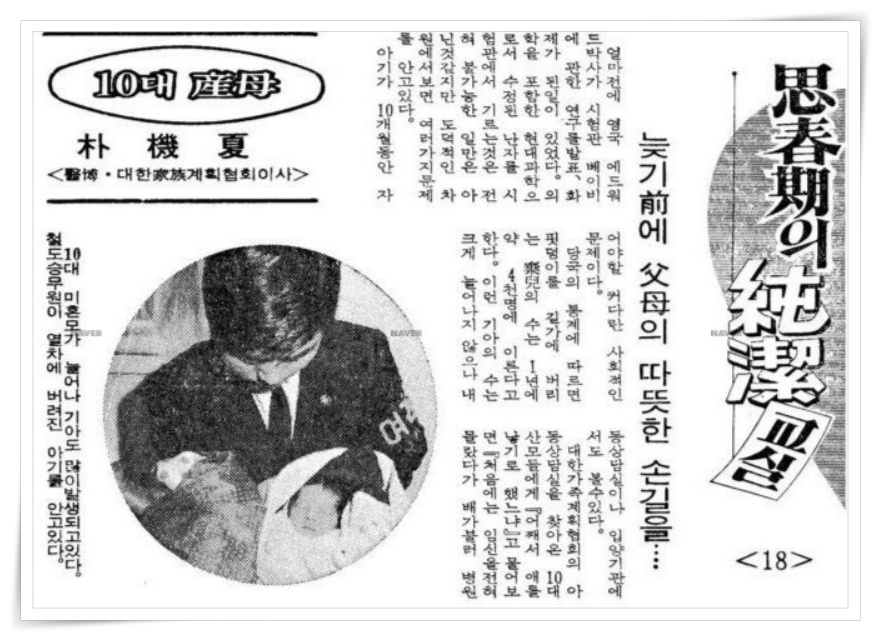- Headline: "Adolescent Purity Classroom Ep. 18 Teenage Mothers"
- Source: Kyunghyang Shinmun
- Date of Publication: December 9, 1975
- Summary:
The increasing prevalence of teenage mothers is emerging as a significant societal issue that must be addressed not only as a population concern but also from a humanitarian perspective. According to the child counseling center of the Planned Parenthood Federation of Korea, most teenage mothers seeking assistance report that they gave birth because "the abortion was unsuccessful, and they had no other choice." This underscores the lack of comprehensive purity education across society.
Teenage pregnancies also present numerous medical challenges. Teenage mothers are often not fully developed physically or mentally, making them particularly prone to complications such as toxemia of pregnancy and risks associated with natural childbirth. Furthermore, because these young mothers have not yet developed emotional independence or maternal instincts, their children are often negatively affected. The issue of teenage unwed mothers is a national concern, affecting population policy and contributing to "problem children," demanding urgent high-level solutions. (Gi-Ha Park, M.D., Director of the Planned Parenthood Federation of Korea) Unwed mothers have been stereotyped as the social concerns created by female workers in industrial zones or female high school students within a gendered discourse on sexuality that seeks to control female behavior through purity education. This discourse has been legitimized under the authority of experts, reinforcing prejudices that depict unwed mothers in Korean society as young, poorly educated, and sexually promiscuous. These biases have persisted for decades, shaping societal perceptions of unwed motherhood.
CLICK the article below to view the original scanned article as it appeared in print, complete with text and images, on the Naver News Library, which archives Korean newspapers from the 1920s to the 1990s. For easier reading, click “텍스트 보기” (View text) in the top right corner to open a text-only window.
Note: Articles are in Korean, and English translations are not provided in the library.  The English summary and translation of this article is provided by UMI4AA.
|
